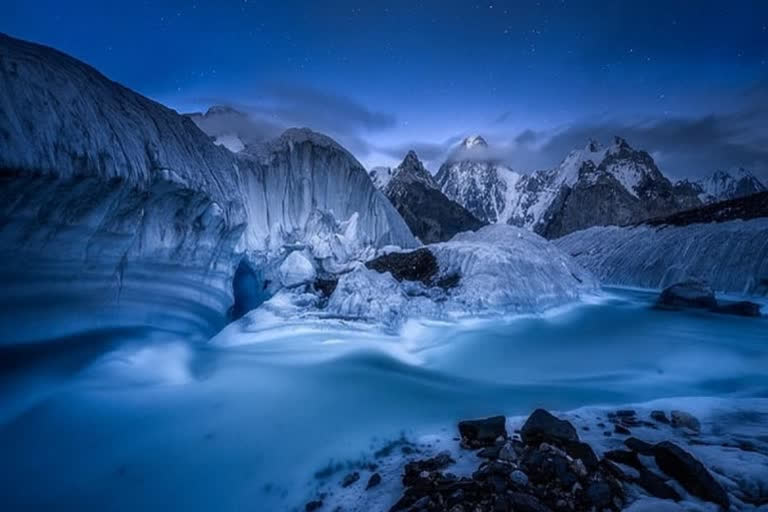Dehradun: Every year, the Government of Uttarakhand celebrates September 9 as Himalaya Day. The celebration in Uttarakhand started in 2010 to preserve the ecology of the Himalayas. The special day aims for sustainable development, ecological sustainability, and maintaining the ecosystem. However, because of climate change, global warming, and human intervention, the Himalayas risk losing their delicate ecology.
Also Read: Uttarakhand to withdraw SLP on Char Dham from SC
This Himalaya Day, let's take a look at some of the challenges of preserving the ecology of the Himalayas:-
1. Natural water sources drying up in the Himalayan region
There is a continuous change in the weather pattern in the region. Due to this, all valuable plants are on the verge of extinction. There is also an increase in landslides, cloud bursts, glacier breaks, and flash floods. All of this is a sign that the Himalayas are in trouble. Unplanned development is happening in the name of tourism and industry. The construction of mega-dams is also causing an ecological disaster in the region.
2. More focus on air, water, forest and soil
Kalachand Sai, Director of Wadia Institute of Himalayan Geology, believes that there is a need to focus on four crucial things. It includes air, water, forests, and soil. The natural resources found in the Himalayan regions should not be over-exploited as it affects the environment. Similarly, there is a need for social development in the Himalayan region as well.
3. Environment Impact Assessment Study is necessary
Kalachand Sai also said that to save the Himalayas, Environment Impact Assessment Study must be conducted before starting development projects. Assessment study is very important. Wadia Institute also keeps on doing all kinds of studies continuously.
4. Himalaya is essential for life
Wadia director Kalachand Sai said that the Himalayas is an important part of life, because all valuable medicinal herbs, freshwater, etc are obtained from the Himalayas. The environmental changes are happening continuously and people need to be alert from now on. Everyone has to come together to save the Himalayas. Only then the Himalayas can be saved.
5. Black Carbon threatens glaciers
According to the research done by Wadia scientists, the glacier line is retreating due to Black Carbon.
Also Read: Uttarakhand: HC notice to Facebook over misuse of photos, videos
What is Black Carbon
Particulate matter emitted by incomplete combustion of fossil fuels, forest fires, smoke from industry, brick kilns, burning of stubble in fields, burning of garbage, smoke from vehicles is called Black Carbon. As, Black Carbon enters the atmosphere, the temperature in the atmosphere increases. Black Carbon remains stable for a few weeks after emissions into the atmosphere. It is a short-lived climate pollutant. Which in a few days affects climate change, glacier melting, agriculture and human health. Black Carbon absorbs the energy coming from the sun, due to which the temperature of the atmosphere increases.
Effect of Black Carbon on Glaciers
Black Carbon affects cloud formation as well as regional circulation and precipitation. In addition, Black Carbon and co-emitted particles reduce the effect of albedo (the ability to reflect sunlight) as these particles settle down on the surface of ice and glaciers. Due to which the surface temperature of ice and glaciers increases. The glaciers present in the Himalayan regions start melting. Not only this, when black carbon reaches the higher Himalayan regions, the heat increases so much that gradually the line of glaciers present there starts to move upwards.
Measures to control Black Carbon:
Black Carbon generates from the burning of wood, forest fires, industrial smoke, burning of stubble in fields, burning of garbage, smoke from vehicles, etc. In such a situation, biomass stoves, LPG cylinders should be used instead of wood for cooking. Apart from this, soft brick kilns should be used in industries. Carbon emission-free buses and trucks should also be allowed. The tradition of burning stubble in the fields should be banned. Garbage burning in the open should be banned. Forest fires need to be controlled and monitored.
Also Read: Trapped workers rescued by Corbett National Park employees



